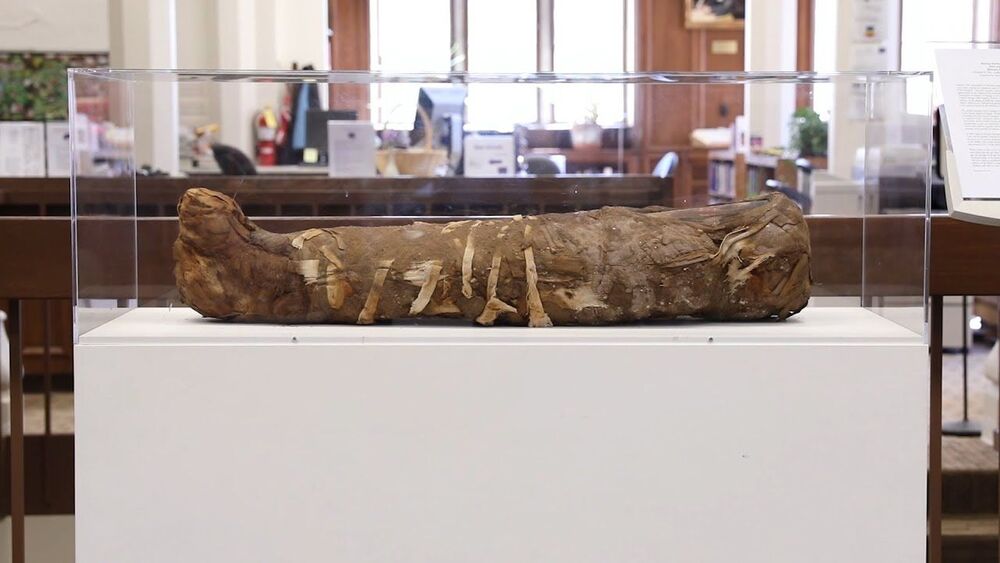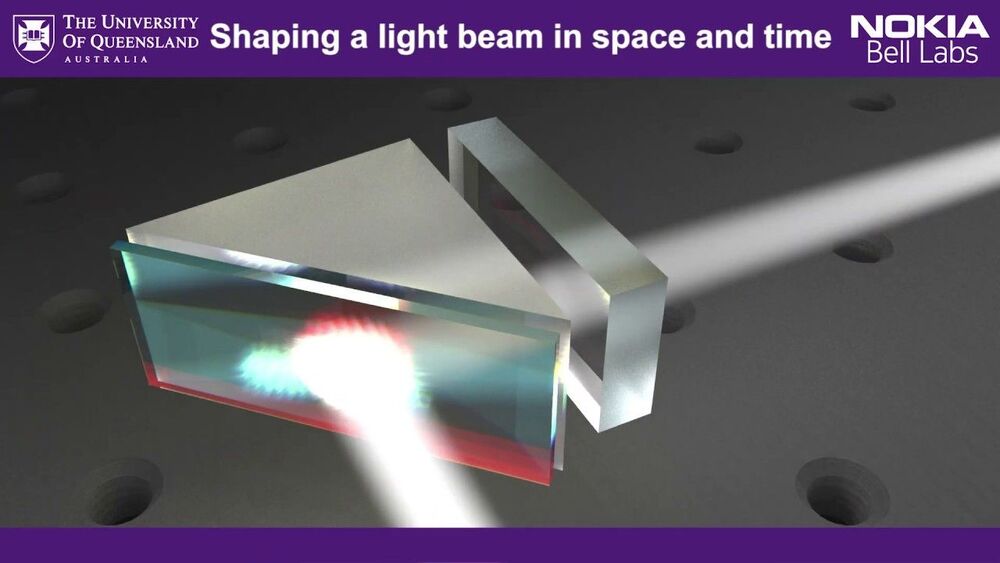Dec 14, 2020
Quantum Internet Tested at Caltech and Fermilab
Posted by Quinn Sena in categories: internet, quantum physics
Collaboration achieves sustained high-fidelity quantum teleportation over a distance of 44 kilometers.
Collaboration achieves sustained high-fidelity quantum teleportation over a distance of 44 kilometers.

Researchers used the powerful X-rays of the Advanced Photon Source to see the preserved remains of an ancient Egyptian girl without disturbing the linen wrappings. The results of those tests point to a new way to study mummified specimens.
The mummified remains of ancient Egyptians hold many secrets, from the condition of the bodies to the artifacts placed within the burial garments. Now a team of researchers has found a way to unwrap those secrets, without unraveling the mummies themselves.
Astronomers have found more than a thousand stars that once belonged to an ancient satellite galaxy inside our own.
Though it sounds like something straight out of science fiction, controlling the speed of light has in fact been a long-standing challenge for physicists. In a study recently published in Communications Physics, researchers from Osaka University generated light bullets with highly controllable velocities.
According to Albert Einstein’s principle of relativity, the speed of light is constant and cannot be exceeded; however, it is possible to control the group velocity of optical pulses.
Currently, the spatiotemporal coupling of optical pulses provides an opportunity to control the group velocity of three-dimensional non-diffraction optical wave-packets, known as “light bullets,” in free space.

Optics researchers from The University of Queensland and Nokia Bell Labs in the US have developed a new technique to demonstrate the time reversal of optical waves, which could transform the fields of advanced biomedical imaging and telecommunications.
Time reversal of waves in physics doesn’t mean traveling back to the future; it describes a special type of wave which can retrace a path backwards through an object, as if watching a movie of the traveling wave, played in reverse.
Continue reading “Physicists create time-reversed optical waves” »
Virgin Galactic will fly again when VSS Unity is ready.
A bad computer connection foiled Virgin Galactic’s attempt to reach space over the weekend, company officials said.
VSS Unity, Virgin Galactic’s newest SpaceShipTwo vehicle, lifted off Saturday morning (Dec. 12) from New Mexico’s Spaceport America beneath the wings of its carrier airplane, VMS Eve.
Am I reading this wrong? Sunelight is literally a cure / weapon against corona? Or am I missing something / making an incorrect logical link?
Researchers from Tel Aviv University (TAU) have proven that the coronavirus can be killed efficiently, quickly, and cheaply using ultraviolet (UV) light-emitting diodes (UV-LEDs). They believe that the UV-LED technology will soon be available for private and commercial use.
This is the first study conducted on the disinfection efficiency of UV-LED irradiation at different wavelengths or frequencies on a virus from the family of coronaviruses. The study was led by Professor Hadas Mamane, Head of the Environmental Engineering Program at TAU’s School of Mechnical Engineering, Iby and Aladar Fleischman Faculty of Engineering. The article was published in November 2020 issue of the Journal of Photochemistry and Photobiology B: Biology.
Continue reading “LED lights found to kill coronavirus: Global first in fight against COVID-19” »
They’re another welcome weapon in the fight against fossil fuels.
After getting bodied in the news cycle for a few months, small modular nuclear startup NuScale Power has an additional potential path to the diverse energy market. In a new evaluation run by the U.S. Department of Energy’s Idaho National Laboratory, NuScale’s nuclear module performed effective catalysis for hydrogen.
☢️You love nuclear. So do we. Let’s nerd out over nuclear together.
Continue reading “Tiny Nuclear Reactors Yield a Huge Amount of Clean Hydrogen” »
Recently, Google introduced Portrait Light, a feature on its Pixel phones that can be used to enhance portraits by adding an external light source not present at the time the photo was taken. In a new blog post, Google explains how they made this possible.
In their post, engineers at Google Research note that professional photographers discovered long ago that the best way to make people look their best in portraits is by using secondary flash devices that are not attached to the camera. Such flash devices can be situated by the photographer prior to photographing a subject by taking into account the direction their face is pointing, other light available, skin tone and other factors. Google has attempted to capture those factors with its new portrait-enhancing software. The system does not require the camera phone operator to use another light source. Instead, the software simply pretends that there was another light source all along, and then allows the user to determine the most flattering configuration for the subject.
The engineers explain they achieved this feat using two algorithms. The first, which they call automatic directional light placement, places synthetic light into the scene as a professional photographer would. The second algorithm is called synthetic post-capture relighting. It allows for repositioning the light after the fact in a realistic and natural-looking way.
China’s Chang’e 5 lander touched down on the moon and collected the first lunar samples in nearly 50 years, but now the lights have gone out.
